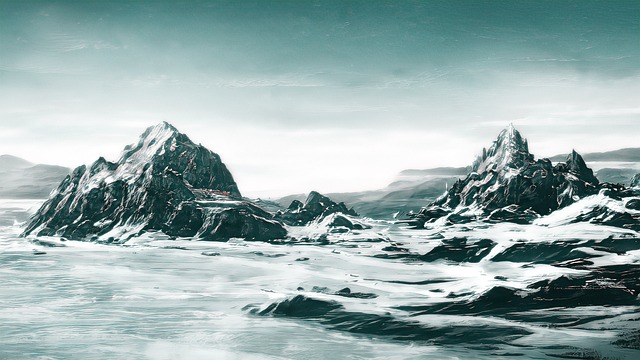# Exploring the Intersection of AI Art and Traditional Techniques: A New Era of Artistic Expression
As technology continues to evolve, the art world finds itself at a fascinating crossroads where artificial intelligence (AI) intersects with traditional artistic techniques. This convergence is not merely a trend but rather a transformative movement that is reshaping the landscape of artistic expression. Artists are now equipped with unprecedented tools that allow them to explore new dimensions of creativity, challenge conventional norms, and redefine the very essence of what art can be.
## The Rise of AI in Artistic Creation
In recent years, the advent of AI-generated art has sparked both excitement and debate within the artistic community. AI algorithms, particularly those involving machine learning and neural networks, have demonstrated an ability to create visually stunning pieces that can sometimes rival those produced by human hands. These algorithms analyze vast datasets of existing artworks, learning patterns, styles, and techniques that inform their creations. As a result, AI can generate unique pieces that blend various artistic styles, pushing the boundaries of what is considered possible in art.
Moreover, the accessibility of AI tools has democratized the art-making process. Artists of all skill levels can leverage platforms like DALL-E, Midjourney, and Artbreeder to experiment with their creative visions. This shift has opened the floodgates for new voices and perspectives, allowing individuals who may not have traditional artistic training to engage with the medium. Consequently, the art community is witnessing an influx of diverse styles and ideas, enriching the cultural tapestry of contemporary art.
## Bridging the Gap: Collaboration Between AI and Traditional Techniques
While AI-generated art often garners attention for its novelty, it is essential to recognize the potential for collaboration between AI and traditional artistic methods. Many contemporary artists are not viewing AI as a replacement for their skills but rather as a complementary tool that enhances their creative processes. This partnership can result in innovative works that combine the precision of AI with the emotional depth and nuance of human expression.
For instance, artists like Refik Anadol and Mario Klingemann have successfully integrated AI into their creative workflows, producing mesmerizing installations that challenge viewers’ perceptions of reality. By utilizing AI to analyze and reinterpret existing artworks, these artists create immersive experiences that invite audiences to engage with art in new and thought-provoking ways. Such collaborations not only expand the possibilities of artistic expression but also encourage a dialogue between technology and traditional craftsmanship.
In addition to enhancing creativity, this collaboration can also serve as a means of preserving traditional techniques. Artists can use AI to analyze and replicate historical styles, ensuring that techniques passed down through generations are not lost to time. This fusion of old and new can result in a richer understanding of art history while allowing contemporary artists to innovate upon established practices.
## The Ethical Implications of AI in Art
As AI continues to play a more significant role in artistic creation, ethical considerations come to the forefront of the conversation. Questions surrounding authorship, originality, and the value of human creativity are becoming increasingly complex. When an AI generates a piece of art, who is the rightful owner? Is it the programmer, the artist who provided the input, or the AI itself? These dilemmas challenge traditional notions of artistic ownership and raise important discussions about the nature of creativity.
Furthermore, the potential for AI to replicate existing styles raises concerns about the dilution of artistic identity. Some critics argue that reliance on AI could lead to a homogenization of art, where unique voices are overshadowed by algorithmic trends. However, proponents contend that AI can serve as a catalyst for innovation, encouraging artists to explore new avenues and push the boundaries of their craft.
Ultimately, navigating these ethical considerations requires an ongoing dialogue within the art community. Artists, technologists, and ethicists must collaborate to establish frameworks that respect both human creativity and the advancements made possible through AI. By doing so, the art world can embrace the transformative potential of AI while safeguarding the integrity of traditional artistic practices.
## Conclusion: Embracing a New Era of Artistic Expression
The intersection of AI art and traditional techniques marks the dawn of a new era in artistic expression. As artists explore the possibilities presented by AI, they are not only reimagining the creative process but also redefining the very nature of art itself. This evolution is characterized by collaboration, innovation, and a willingness to engage with the complexities of technology.
In this dynamic landscape, artists are empowered to experiment and push the boundaries of their creativity. By embracing AI as a tool rather than a replacement, they can create works that resonate on multiple levels, merging the emotional depth of traditional techniques with the limitless possibilities offered by technology. As we move forward, the art world will undoubtedly continue to evolve, inviting us to explore the rich tapestry woven from the threads of human creativity and artificial intelligence.
In conclusion, the future of art is not a battle between AI and traditional techniques but rather a harmonious coexistence that celebrates the strengths of both. As artists navigate this new terrain, they will undoubtedly continue to inspire, challenge, and engage audiences in ways we have yet to imagine. The intersection of AI and traditional art is not just a new chapter; it is a whole new book waiting to be written.

